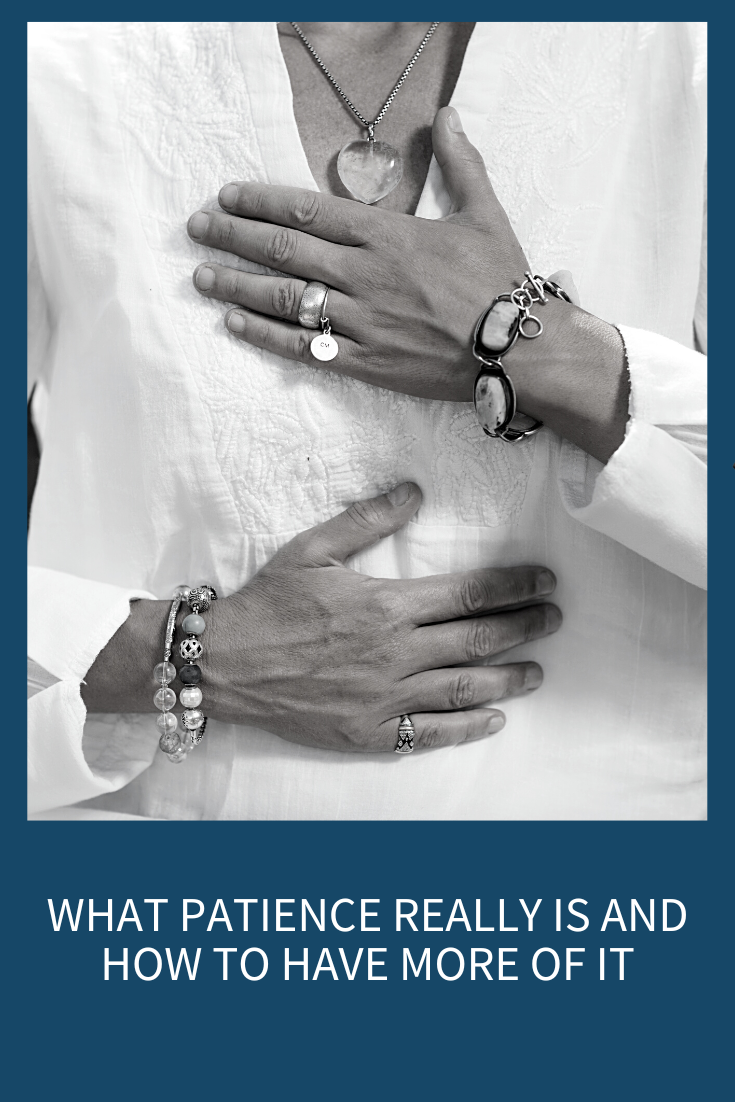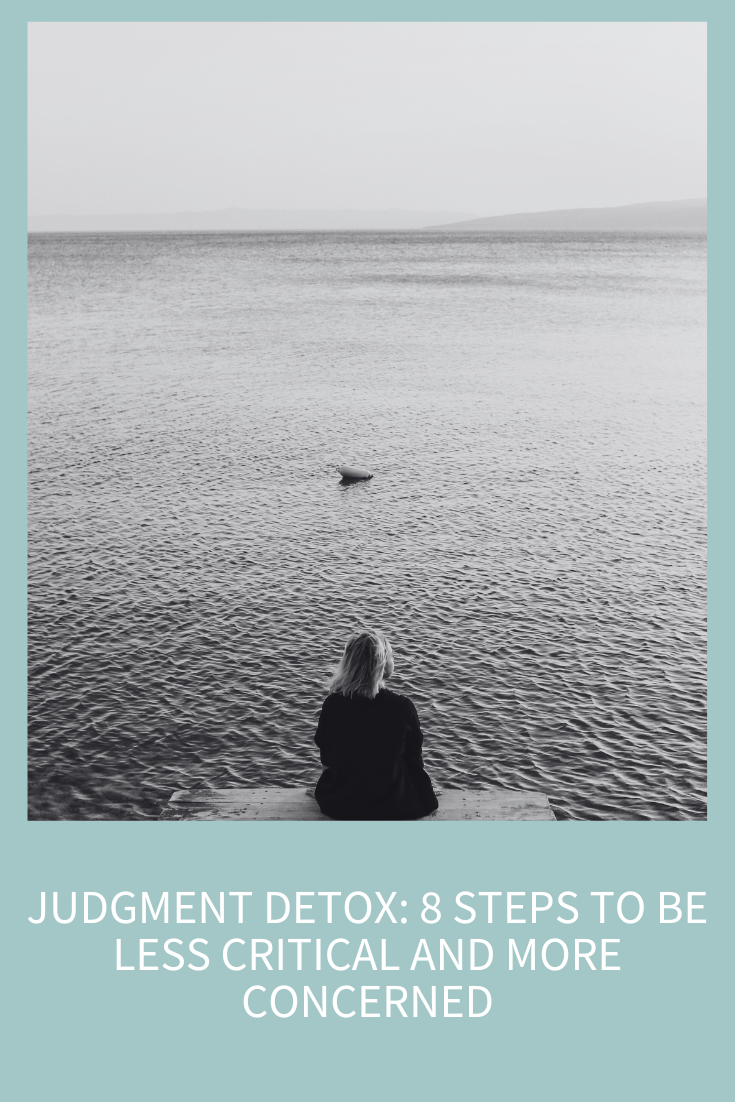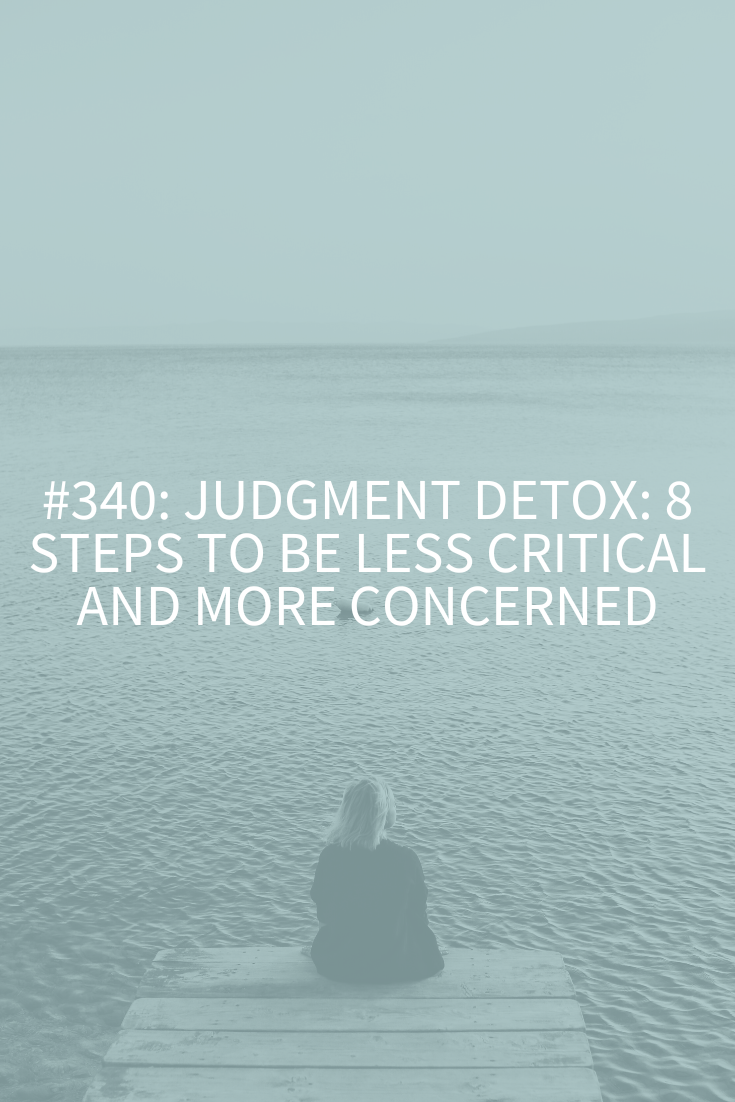
Did you know that the opposite of patience isn’t impatience? I’ve got to tell you that I didn’t know that until I started researching this episode. Patience is actually on a continuum, with too much or too little, on either side of the spectrum, being unhealthy. The sweet spot is somewhere right in the middle. Having patience is correlated with all kinds of good stuff: the ability to work collaboratively, healthy and strong relationships, and achievement of goals. Today, you’ll learn about the three kinds of patience, why it’s good for you and my top five tips for having more of it.
10-minute read
Why is it Hard?
There are many variables that come together to make the perfect storm of how patient you are. These can include factors such as mental health issues, physical problems and pain, past trauma, and the family culture in which you were raised.
But I would also add technology, the internet, our phones and social media to the mix of the biggest culprits in why we have less patience. In a world of instant gratification, patience is in low demand. According to a Pew Research Center report on millennials, hyperconnectivity is the main culprit in “a need for instant gratification and a loss of patience.” In another study at the University of Massachusetts at Amherst, roughly 25% of people would stop watching a video that took more than five seconds to load, and just over 50% stop watching after ten seconds.
What is Patience?
I’m going to be talking a lot today about the work of Sarah Schnitker, PhD, Associate Professor of Psychology and Neuroscience at Baylor University because she’s the boss when it comes to research on patience. The first thing I like is that she places patience on a continuum because you always respond with some level of patience, so being impatient isn’t at one end of the spectrum with patience on the other. No siree. Instead, being patient is in the middle of that line with less patience on one end and too much on the other.
Schnitker defines patience, right there in the middle, as the ability to be calm when tough stuff happens in your life. When you’re frustrated or facing some type of adversity or suffering, you’re able to remain relaxed and composed. At its core, patience is the ability to wait without frustration or agitation.
When you respond with less patience, or no ability to be calm, you basically overreact to a situation. You’re caring too much and putting too much meaning into what’s happening. When you respond with too much patience, you become too calm and are, therefore, disengaged from the situation or person. Essentially, too much patience is not caring.
You can think of the patience continuum this way. Let’s say you’re having a fight with your partner or your mom. The healthy, patient way to have this argument would be for you both to remain calm, listen attentively to each other and then come together to figure out a solution. In this instance, you’re both in the middle of the patience spectrum.
However, one of you might end up on one end of the continuum with a less patient or impatient response, such as yelling, becoming angry or enraged, lashing out or even violence. Or, one of you might end up on the complete other side of the spectrum by walking away, ignoring, stonewalling, giving the cold shoulder or in some other way being impassive and completely checking out. Both sides are unhealthy and impatient. They just show up in very different ways.
Three Types of Patience
According to Schnitker’s research, there are three types of patience:
- Interpersonal patience
- Patience in life hardships
- Patience for daily hassles
If you have interpersonal patience, it means you’re able to be patient with other people. As you might imagine, this is the one you’ve got to have if you want to be in successful relationships both at home and at work.
Patience with life hardships means you can deal, over the course of your life, with setbacks and bigger adversities. This might include a chronic illness or disability, bankruptcy, the untimely death of a loved one, or an act of violence such as rape. In other words, you can persevere and ultimately move forward even when something happens that needs to be dealt with for a long time.
Patience with daily hassles is just what you think. It’s your ability to deal with the little stuff that happens each day. It’s about being calm when minor irritations and snafus happen as you go about your day-to-day life. You know, like when you spill toothpaste on your shirt and you’re already running late, or your flight gets cancelled when you’re already at the airport, or waiting on hold for 20 minutes to speak to a representative, having them finally say, “hello” and then the call gets disconnected.
You might find yourself good in one area and not another so, when we get to the tips, you can apply them very specifically.
Impatience is Bad for You
There’s lots of research showing that impatience is bad for you physically as well as mentally. Impatience has been connected to:
- Irritability
- Higher risk of heart problems
- Difficulty handling stressors (so stress becomes anxiety)
- Lack of self-control
- Speeding up the aging process (impatience has been linked to shorter telomeres, the DNA that influences our cells to age)
- Loneliness
- More depressive symptoms and other negative emotions
While Patience is Good for You
Having patience, on the other hand, has been linked to some wonderful things:
- Higher life satisfaction
- Higher self-esteem
- Greater self-control
- Greater ability to accomplish goals
- Better emotional regulation and less depression and anxiety
- Being more empathic and a better friend/partner
Top 5 Tips for Cultivating Patience
In one of her studies, Schnitker conducted patience training and participants reported not only feeling more patient in their relationships but also reported less depression and more positive emotions. What her studies show is that patience is a skill that you can practice and get better at. There are many easy-to-apply tips to help you move that needle into the middle where patience, equanimity and calm live, so let’s get to it.
Tip #1: Think the Word Patience
I’ve mentioned before that our brains run on recency and frequency. The more recently and the more frequently you’ve thought or done something, the more attention the brain gives it. This is why it’s often hard to start a new habit because you’ll forget about it during the day (“Yikes! I was supposed to set an intention before I went to work today, and I keep forgetting!”).
If you think the word patient more often, your brain will bring it to the forefront more often and help you be more mindful about it. To do this, use what’s called an action trigger. An action trigger is used when there’s a certain behavior you want to reinforce and attach it to a specific activity you’re already doing every day. So, if you want to start exercising more, you might go for a walk every night right after dinner.
In this case, think of something you do often in the day and think of the word, patience, every time you do it. It could be any time you go to the bathroom; as you walk there, think patience. Or each time you eat, take a drink, pick up your phone, check your email or anything else that happens a few times a day. Try this for a week and you’ll absolutely slow yourself down and be more patient.
Tip #2: Start Meditating
I’ve written a ton about the benefits of meditation, and we know from the research that it’ll also help you be more patient. Download my free Meditation Starter Kit or my mini course, “Learn to Meditate for 15 Minutes in Just 15 Days”.
Tip #3: Identify Your Feelings and Triggers
There are certain things that trigger you when it comes to patience. Maybe it’s any type of conflict, maybe it’s when you perceive someone else is being rude or unfair, or maybe it’s whenever you don’t get enough sleep. Keep a journal of your feelings or track your feelings using one of the many apps available for one week and start to get a handle on when exactly you feel impatient and what elements lead to that.
The key is to identify what emotion is really driving your response of impatience. In a long commute and feeling impatient? What’s really going on? Are you angry because you want to get home to eat (maybe next time, bring a healthy snack in the car)?
Once you’ve identified your feelings and triggers, you’ll be better able to practice mindfulness to be in your moments so you can act, not react in these situations. It’ll also help you preventatively prepare for people and environments that you know trigger your impatience. Taking two deep breaths (long inhale through your nose and the slowest exhalation you can do through your mouth) will absolutely help you recalibrate in these moments.
Tip #4: Slow Down and Practice Delayed Gratification
When you’re moving fast or noticing yourself feeling rushed, it’s a big indicator that you’re likely going to have less patience. If you’re thinking, “I’m always in a rush, Abby,” then let this be your warning sign that you have way too much on your plate and it’s time to problem-solve how to have less to do each day.
When you are doing something, use that mindfulness to check in and notice if you’re feeling rushed. Is there even a reason to feel this way? Is your anxiety leading you instead of your calm mind? Take stock, take a breath, and slow down.
As I mentioned earlier, we live in a time of instant gratification, and this becomes a habit of thought and enforces neural wiring which supports needing more immediate gratification. Some ways to do this include:
- Don’t respond to the text right away.
- Don’t immediately hit reply on that email.
- When you’re waiting anywhere, don’t whip out your phone. Instead, simply look at your surroundings, chat with the person next to you or bring a book along.
- Go to the store more instead of buying online.
- Make a list of what needs to be done around the house instead of asking your partner daily to do things.
- Don’t text or call your partner during the workday.
- If your small children ask for a glass of water while you’re standing in the kitchen, tell them you’ll get it for them in a few minutes, even if you’re not doing anything.
Part of slowing down is also to stop multi-tasking. Doing one thing at a time will help you naturally slow down and delay gratification.
Tip #5: Reframe
At its most basic level, cognitive reframing helps you look at a situation, person, thought or feeling from a different perspective. It’s a strategy that helps you open your mindset to a new point of view – a new angle on what’s happening so you can think differently about it and learn how to let things go.
This is crucial because you feel the way you think. So, changing your thinking about something will change your feeling about it. That’s how you go from feeling shitty to feeling at peace about something. You can stop letting it bother you and stop thinking about it – you can stop overthinking.
The thoughts you think and the subsequent emotions that you feel are almost always rooted in old, negative patterns that you’ve had since childhood. These ways of thinking and coping likely served you in some way then, but they definitely don’t serve you now.
When you get a new perspective on something by reframing, you can finally change those old patterns, gain control over your thoughts and feelings, and start feeling better! Remember, a habit is just a thought you’ve had over and over again. You can absolutely create new patterns of thought that become new, healthy habits.
You’ve heard me say before that life is happening for you, not to you. That’s a quick example of a cognitive reframe. Thinking of problems as challenges is another cognitive reframe. Some reframes are easy and some are a bit harder, so let’s get to the specific process for reframing and some quick examples to help you really integrate this easily into your life.
I lay out my five-step process for cognitive reframing in episode 158: how to stop overthinking and let things go that bother you so, make sure you check that out.
Resources for What Patience Really is and How to Have More of It
How to Make Mindfulness a Habit
Meditation Album: Learn to Meditate for 15 Minutes in Just 15 Days
How to Stop Overthinking and Let Things Go That Bother You
Research
Yim, Onn-Siong, Zhang, Xing, Shalev, Idan, Ebstein, Richard P. et al. (2016) Delay discounting, genetic sensitivity, and leukocyte telomere length. Psychological and Cognitive Sciences, PNAS, 113 (10) 2780-2785 https://doi.org/10.1073/pnas.1514351113








